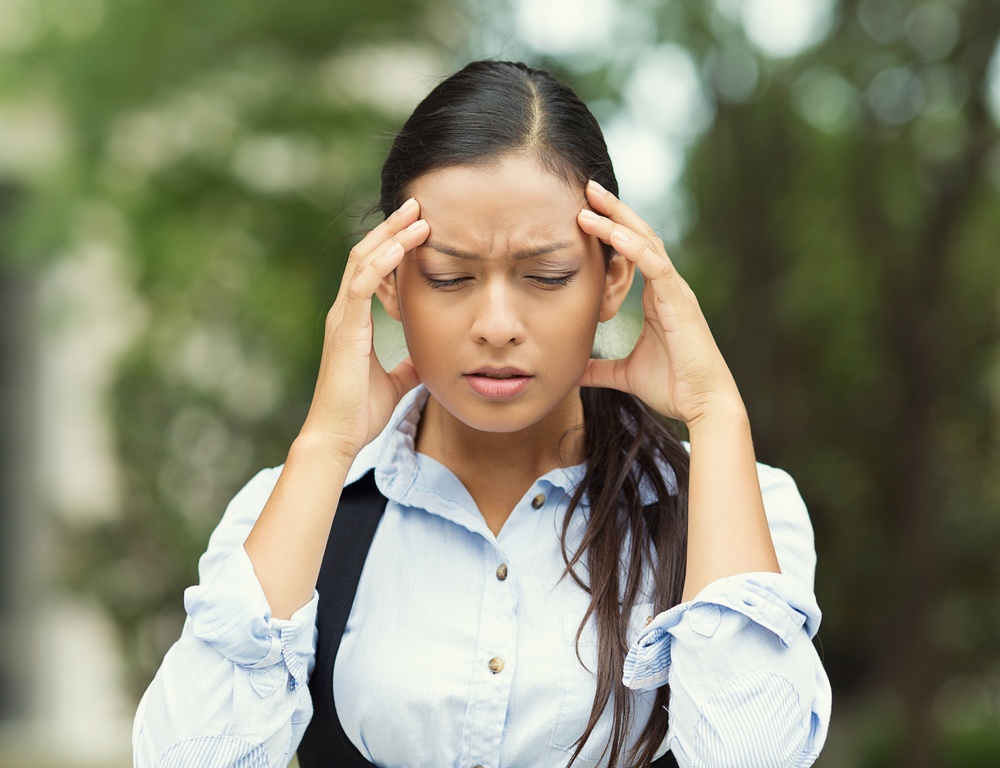
Remember when your grandmother would say she could feel a storm coming “in her bones?” That was based on barometric pressure, which is the term scientists give to the weight of the air pressing on the earth’s surface. This pressure triggers various physical reactions, and because it governs the air currents and weather, it can also cause migraine patients to develop headache episodes.
How Changes in Pressure Trigger Migraines
One reason barometric pressure can cause migraines is that it impacts the sinuses. These are filled with air pressing outward, which is matched and balanced by the external air pressure. When external pressure is lower than usual, the internal pressure makes the sinuses expand and cause a headache. When it’s higher, however, the increased pressure can cause the blood vessels to dilate and more blood to flow to the brain, which also results in a headache.
In addition, changes in barometric pressure often happen simultaneously with other weather-induced triggers, such as:
- An imbalance in the brain’s level of serotonin, which affects your mental state;
- Bright, sunny weather conditions, which increases the glare and can trigger patients sensitive to light;
- Hot, dry weather, which raises the risk of dehydration—a common trigger for migraineurs;
- The development of storms with lightning that sends out electromagnetic waves, and rain that causes plants to give off spores, triggering allergic reactions.
You can track the barometric pressure using a device called a barometer, which can help you predict changes in the weather patterns ahead of time. Track the air circulation patterns to determine whether they are moving clockwise, indicating a high-pressure system, or counter-clockwise indicating a low-pressure system. High pressure is usually associated with fair, warm or hot weather, while low pressure could bring clouds and rain. Both types of weather can be detrimental to migraine patients, but at least this can alert you ahead of time as to what to expect.
Preventing Barometric Pressure Migraines
By knowing in advance what the weather is likely to do, patients who know they have weather-related triggers can take steps to reduce the impact of the changes on their bodies. Possible preventive measures you can take include:
#1: Tracking Weather Developments
Your grandmother wasn’t exaggerating when she said she knew active weather changes were coming. Science has proved birds can sense changes days in advance, so why shouldn’t humans do so? Invest in a barometer that enables you to track projected pressure changes, or look for an app that does it for you. Many of these apps can identify changes based on your location, so you can get advance warning about changes coming in shortly. This helps you to anticipate even unexpected events and take steps to protect yourself before they arrive.
#2: Staying Hydrated
This is vital at all times for migraine sufferers, but maximizing your hydration requires more than just drinking extra water. Remember, our bodies are composed of 65% water, and if you feel thirsty, you’re already dehydrated. Avoid getting there by employing good hydration strategies, such as:
- Keeping a carafe or water bottle beside your bed,
- Drinking a glassful before every meal or cup of tea or coffee,
- Carrying water with you everywhere you go, and taking four sips (not one) each time you remember,
- Eating fruit or oatmeal for breakfast, or adding chia seeds to your meals, which help to absorb and retain moisture,
- Diluting any fruit juices you drink, to reduce the sugar and increase the water content
- Adding a slice of fruit to your water to make it more exotic (and palatable), such as orange, cucumber, pineapple, etc.,
- Taking tepid baths and showers rather than hot ones, which dehydrate your skin and glands, and
- Keeping the moisture content of the air at a comfortable level through the use of humidifiers and/or dehumidifiers.
There are various health apps available that help remind you to drink water and many of them are free to download, so being forgetful is no longer a valid reason not to drink.
#3: Reducing Exposure
If you know you’re headed for a bad patch, weather-wise, make plans that enable you to stay indoors. While this won’t prevent exposure to the electromagnetic waves or barometric pressure, you can limit your exposure to glare, high temperatures, and increased humidity.
#4: Protecting Your Eyes
Even indoors, bright and fluorescent lights can trigger a migraine episode for some patients. Block out the glare with tinted migraine glasses such as these from Axon Optics, which are made for both indoor and outdoor wear.
#5: Limiting Other Triggers
Most migraine patients can handle one or two triggers at a time, these are typically additive so it becomes overwhelming when you’re juggling five or six simultaneously.
Turn off overhead lights and enjoy the ambiance of a dimmer to help combat the other triggers you’re experiencing. Avoid stressful situations, get enough sleep and exercise, and watch your food and drink intake, avoid caffeine, alcohol and other foods that affect your attacks.
Various health apps allow you to create personal dietary settings, so you can establish a customized plan for those days when barometric pressure changes are in the wind.
How to Treat a Barometric Migraine
If all your preventive measures fail and the dreaded migraine develops, you can try to stop it in its tracks with non-medicinal measures, such as applying a wrapped ice pack to your forehead or neck, depending on the location of the pain. Learn to relax and use deep-breathing techniques to get through the pain. Avoid over-exerting yourself, increase your fluid intake and get as much rest as you can.
You can treat your migraine with over-the-counter pain relievers or non-steroidal anti-inflammatory medications like ibuprofen or naproxen. Apply topical analgesic products, such as creams containing capsaicin. Use anti-nausea remedies to reduce your digestive symptoms, and if you have prescription migraine medications such as triptans you can use these if your headache fulfills the conditions required for taking them.
Alternative therapies such as acupuncture, aromatherapy, and massage could also help, and for some sufferers, there’s nothing to beat a gentle head massage or acupressure on critical points. Yoga, meditation, and music therapy can help you to relax, while nasal irrigation or steamers can clear your sinuses of congestion and eliminate pressure imbalances that contribute to your headaches.
Surviving Barometric Effects
Knowing your triggers is key to understanding how to prevent a barometric migraine, and the advantage you have with this type of episode over other types is that you can (usually!) predict when it’s likely to occur.
With the ongoing climate change we’re experiencing these days, such events may become harder to anticipate. Keeping track could require increased vigilance, the use of helpful apps available, and planning for a faster response time when barometric changes occur.
It’s important to get your migraine doctor on board with your strategy, however, because often he or she might have insights that can help you to be better prepared. With the help of your medical migraine practitioner, you can be ready for whatever the weather brings your way.



